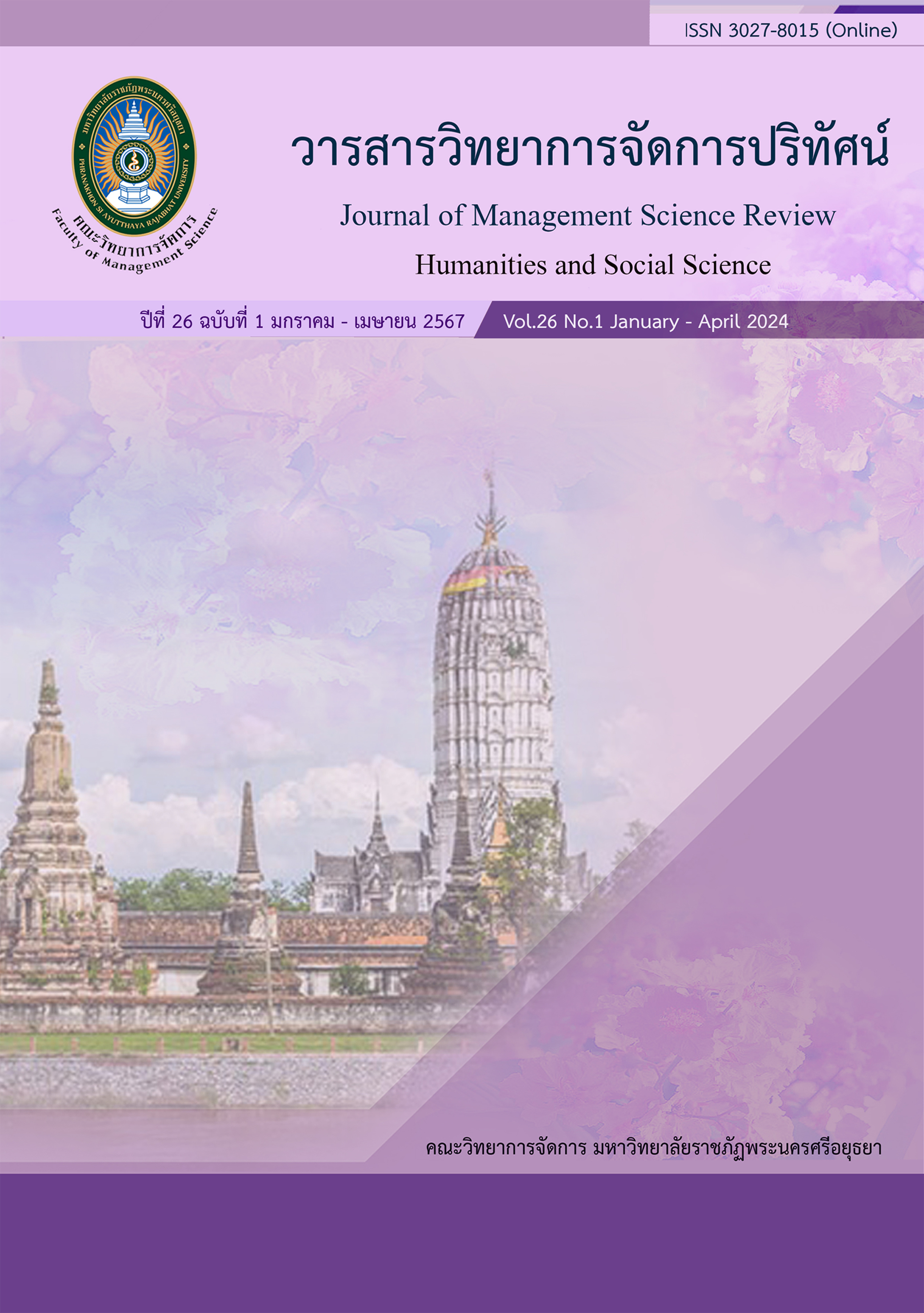Developing Participatory Occupational Groups into Community Product Occupational Groups. The Chao Sanuk Subdistrict, Tha Ruea District, Phra Nakhon Si Ayutthaya Province
Keywords:
Development of Professional Groups, Participation, Community Chili Paste ProductsAbstract
This research study aimed to 1) study the context of community-based occupational groups involved in the production of chili paste in the Prachinburi province, 2) analyze the environmental conditions of community-based occupational groups involved in the production of chili paste, 3) develop a business model using the Business Model Canvas (BMC) for community-based occupational groups involved in the production of chili paste, and 4) explore guidelines for the development of community-based occupational groups involved in chili paste production. The research was qualitative, with primary data provided by members of the chili paste production occupational group in the Tha Chao Sanuk sub-district, Tha Ruea district, Phra Nakhon Si Ayutthaya province, totaling 10 individuals, consisting of 3 group leaders and 7 group members. The tools employed included a SWOT analysis for business environmental analysis and BMC for business development.
The analysis of the environmental conditions of the occupational group revealed strengths such as strong mental well-being, happiness in life, and clear division of work responsibilities within households. Weaknesses included financial instability and lack of experience in chili paste production. Opportunities included support from government agencies for training and knowledge dissemination. Challenges faced by the group included the COVID-19 situation, which hindered continuous group gatherings. Regarding business model development using BMC, the identified customer groups included local community members and general customers, with proximity to the community and access to local markets and community health volunteers. Distribution channels included both online and offline platforms, with standardized production equipment, locally sourced raw materials, logo design, and appropriate packaging selection. These factors contributed to community participation and the utilization of BMC in chili paste product development, providing insights into the collaborative development of community-based occupational groups.
References
Bryman, A. (1986). Leadership and Organization. London: Routedge & Kegan Pahl.
Chambers, R., Pacey, A., and Thrupp, L. A. (1979). Farmer First: Farmer Innovation and agricultural Research. North Yorkshire: Short Run Press.
Cohen, J. M., Normal, T. & Uphoff, N. T. (1977). Rural development Participation: Concept and measures for project design implementation and evaluation. New York: The Rural Development Committee Center for international Studies.
Cohen, J. M., & Uphoff, N. T. (1981). Rural Development Participation: Concept and Measures for Project Design Implementation and Evaluation: Rural Development Committee.Center for international Studies. New York: Cornell University Press.
Fornaroff, A. (1980). Community involvement in Health System for Primary Health Care. Geneva: World Health Organization.
Haq, A. I., & Singgih, M. L. (2019). Business Strategy of Chemical Company Using SWOT and Business Model Canvas Approach. IPTEK Journal of Proceedings Series, (5), 34-42.
Nuphan, W. (2016). People's participation in village development according to the philosophy of Sufficiency Economy. Ban Tok Pok-Talung, Village No. 6, Wang Sapparos Subdistrict, Khlung District, Chanthaburi Province. [Master’s thesis]. Burapha University.
Sparviero, S. (2019). The Case for a Socially Oriented Business Model Canvas: The Social Enterprise Model Canvas. Journal of social entrepreneurship, 10(2), 232-251. https://doi.org/10.1080/19420676.2018.1541011
Toro- Jarrín, M. A., Ponce-Jaramillo, I. E., & Güemes-Castorena, D. (2016). Methodology for the of building process integration of Business Model Canvas and Technological Roadmap. Technological Forecasting & Social Change, 110, 213-225. http://dx.doi.org/10.1016/j.techfore.2016.01.009
Türko, E. S. (2016). Business Plan Vs Business Model Canvas in Entrepreneurship Trainings: A Comparison of Students' Perceptions. Asian Social Science, 12(10), 55-62. doi:10.5539/ass.v12n10p55
Yulia, y., Bahtera, N.I, Evahelda, E., Hayati, L., & Bahtera, N. T. (2020). Business development strategy using business model canvas approach.
Jurnal Muara Ilmu Ekonomi dan Bisnis, 4(1), 106-115. https://doi.org/10.24912/jmieb.v4i1.7563





